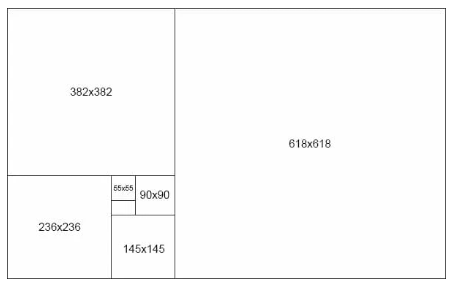Geometry: Creating Inspired Commercial Design
When people think of interior design, they often picture residential spaces – cozy living rooms, trendy kitchens, or serene bedrooms. But commercial interior design is an entirely different world. While it shares many principles with residential design, it goes beyond aesthetics, focusing intensely on function. In the commercial design space, you’re not just designing a beautiful room; you’re creating an environment that aligns with a brand’s objectives, supports the comfort and productivity of employees, and welcomes guests with intention.
One key element that helps fuse form and function in commercial interior design is geometry. Geometry isn’t just about shapes and lines; it’s a tool for balancing visual appeal with purpose.
Here’s how we at Rieke Interiors use geometry to inspire the commercial spaces we design:
1. The Golden Ratio: Harnessing Natural Beauty
One of the most timeless and effective geometric principles in design is the Golden Ratio, also known as the "divine proportion." This mathematical ratio, numerically represented as 1.618, is found throughout nature, from the spirals of seashells to the arrangement of leaves on a stem. Here’s how we use it in commercial design:
Color Balance: A well-balanced space often follows a 60-30-10 rule when it comes to color. Sixty percent of the room uses neutral tones, thirty percent features darker furniture, and ten percent is dedicated to warm, eye-catching accents, with a small five percent splash of bright accents for contrast.
Furniture Layout: Following the Golden Ratio, we ensure that 60 percent of any given space is reserved for furniture, leaving room for circulation and other essential functions.
By applying the Golden Ratio to design, we create spaces that are not only functional but naturally pleasing to the eye.
2. Scale and Proportion: The Art of Balance
Geometry plays a crucial role in establishing the right scale and proportion in any commercial interior. While scale refers to the size of objects within a space, proportion speaks to the relationship between them. In commercial design, both are essential for ensuring a balanced, cohesive environment.
For example:
Balancing Furnishings: Arranging furniture symmetrically or aligning it with key architectural features like windows helps maintain balance in a room. Desks arranged parallel to each other can help keep a workspace orderly, while symmetrical bookcases flanking windows create visual balance.
Lighting and Space: Large light fixtures can anchor a room and add to its proportion when sized correctly. A light that’s too small or too large can throw off the entire design.
By paying attention to scale and proportion, we ensure that every element in the space works in harmony, making the room feel balanced, functional, and complete.
3. Pattern: Making a Statement with Geometry
Geometry is also about the patterns we use in design – whether in the layout of the space, the choice of furniture, or even on the walls and ceilings. Patterns can serve as a brand statement, adding personality and function to a commercial space.
Some ways we incorporate geometric patterns include:
Custom Wall Treatments and Art Installations: Geometric wall treatments or art pieces can turn an otherwise plain wall into a striking feature that draws attention and speaks to a brand’s identity.
Functional Design Elements: Geometry is also practical. Sound-dampening ceiling tiles with geometric designs can reduce noise while adding a creative touch to the space.
Whether it’s through fabric patterns on a chair or bold, geometric art on the walls, these patterns offer an opportunity to reflect a brand’s character while maintaining a cohesive, functional space.
Commercial interior design is about more than just aesthetics – it’s about creating spaces that inspire, support productivity, and align with the brand’s mission. By using geometry to guide our designs, we help our clients achieve a balance between beauty and functionality, ensuring every space we create works as hard as the people in it.
Looking for commercial interior design expertise? Contact Rieke Interiors to discuss how we can incorporate these geometric principles into your next project.





